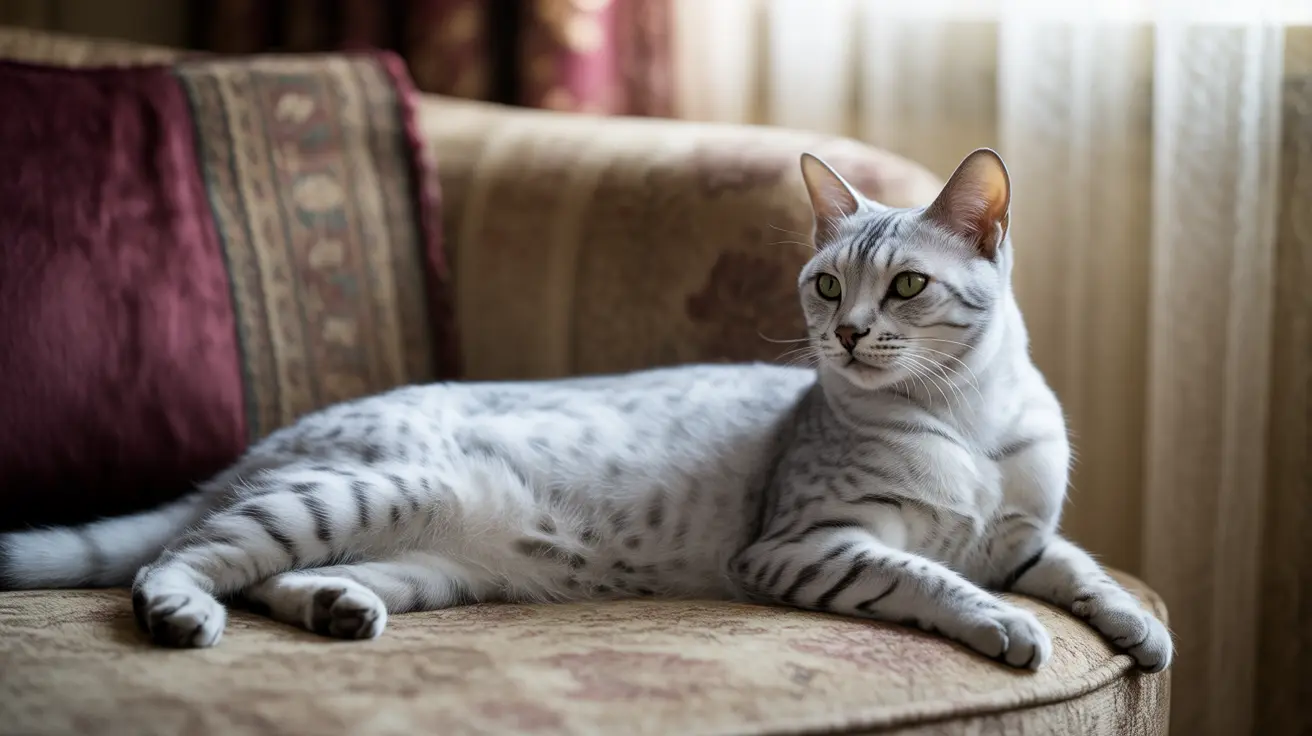The Egyptian Mau is one of the most fascinating and ancient cat breeds, known for its distinctive spotted coat patterns and limited color variations. When it comes to the topic of white Egyptian Mau cats, there's considerable interest and confusion among cat enthusiasts and potential pet owners.
While some cats may appear nearly white, particularly in the silver variety, it's important to understand that a true white Egyptian Mau is not recognized by major breed associations. Let's explore the facts about Egyptian Mau colors, patterns, and the misconception surrounding white specimens.
Understanding Egyptian Mau Color Standards
The breed standards recognize only three official colors for Egyptian Maus: silver, bronze, and smoke. Each of these colors creates a stunning backdrop for the breed's characteristic spotted pattern, but none is truly white.
Silver Egyptian Maus, which can sometimes appear extremely pale, feature a light silver ground color with distinct black spots. The underside, chin, and throat areas may appear almost white, leading to some confusion about the existence of white Egyptian Maus.
The Truth About "White" Egyptian Maus
Despite what you might see advertised or discussed online, there is no such thing as a genetically pure white Egyptian Mau according to breed standards. What people often mistake for white is actually an extremely pale silver coloration.
The genetics that would produce a truly white cat (the dominant white gene) are not part of the recognized Egyptian Mau breed profile. Any cat marketed as a "white Egyptian Mau" would either be:
- A very pale silver Egyptian Mau
- A mixed-breed cat
- A misidentified specimen of another breed
Recognized Color Variations and Their Characteristics
Silver Egyptian Mau
The most popular and striking variety, featuring:
- Pale silver ground color
- Clear black spots
- Light silver to nearly white chin and underside
- Green eye color
Bronze Egyptian Mau
Distinguished by:
- Warm bronze ground color
- Dark brown to black spots
- Rich, warm tone throughout
- Green eye color
Smoke Egyptian Mau
Characterized by:
- Black-tipped coat with silver undercoat
- Dramatic shifting appearance
- Spotted pattern visible in certain lights
- Green eye color
The Genetics Behind Egyptian Mau Colors
The color genetics of Egyptian Maus are complex and specific. The breed's distinctive appearance results from the interaction of several genes:
- The agouti gene (responsible for banding patterns)
- The inhibitor gene (affecting silver coloration)
- Various modifying genes that influence pattern expression
None of these genetic combinations naturally produces a true white coat in purebred Egyptian Maus.
Frequently Asked Questions
Can a white Egyptian Mau cat be recognized for cat shows?
No, white is not a recognized color for Egyptian Maus in any major cat registry. Only silver, bronze, and smoke colors are accepted for show purposes.
What causes the almost white appearance in some silver Egyptian Mau cats?
The pale appearance in silver Egyptian Maus is caused by the inhibitor gene, which reduces pigmentation in the coat. This can result in very light coloring, especially on the chin, throat, and belly areas.
How do the coat colors silver, bronze, and smoke differ in Egyptian Mau cats?
Silver Maus have a pale silver background with black spots, bronze Maus have a warm brown base with darker spots, and smoke Maus appear almost solid black with a silvery undercoat that creates a shimmering effect.
Are there truly white Egyptian Maus according to breed genetics and standards?
No, there are no truly white Egyptian Maus according to breed genetics and official standards. What appears white is actually an extremely pale silver coloration.
What are the distinctive spotted patterns unique to the Egyptian Mau breed?
Egyptian Maus feature naturally occurring spots in random sizes and distributions across their bodies, along with characteristic facial markings including an "M" on the forehead and mascara-like lines around the eyes.
Understanding the true nature of Egyptian Mau colors helps preserve the integrity of this ancient breed while appreciating its natural beauty. While some may wish for a white Egyptian Mau, the breed's recognized colors each offer their own unique charm and appeal.






